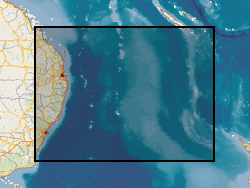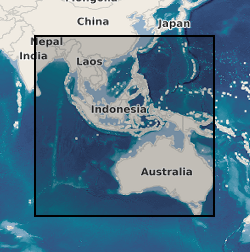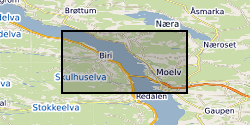University of Cambridge
Type of resources
Topics
Keywords
Contact for the resource
Provided by
Years
Formats
Representation types
Update frequencies
Resolution
-
This dataset describes 35 years of 6-monthly population sampling of adult and juvenile bank voles Myodes glareolus and wood mice Apodemus sylvaticus in a Derbyshire Ash Fraxinus excelsior woodland, together with annual and seasonal ash fruit-fall and a measure of winter severity. Additional data describe a 4 year experiment on a nearby study area where in two winters supplementary ash fruit were supplied and population data collected in parallel to the main study area. Woodland small mammal population dynamics are commonly influenced by variable food supplies (due to masting), climate and population density. However, the effects of precise environmental variables are poorly understood. To explain between-year variations in bank vole and wood mouse reproductive/population growth rates, we applied a state-space model to 33 years of live-trapping data. Experimental additions of ash fruit in winter aided interpretation. Full details about this dataset can be found at https://doi.org/10.5285/80ee4e00-7301-4c40-9dba-12dd0d21b7c7
-
The dataset contains monthly measurements of chlorophyll fluorescence measured using a Walz MINI-PAM II. The chlorophyll flouresence of growing tips of moss samples were measured following saturating pulses three times in the field before dark adaptation three further measurements. Yield of photosystem II, non-photochemical quenching and electron transport rate were calculated. Field work was carried out approximately monthly from April 2017 until September 2018. Full details about this dataset can be found at https://doi.org/10.5285/249034d3-2f4d-42c6-a3cd-113ff3a960c5
-
Data consists of gene expression estimates and encapsulation rates in wild caught Drosophila melanogaster larvae following exposure to different treatments. Treatments include injection with wasp homogenate, injection with oil and no injection. Also provided are functional enrichment categories for differentially expressed genes and library generation and read mapping metrics. The data were produced under the grant: NE/P00184X/1 Why does Drosophila vary in susceptibility to parasitoid wasps. Full details about this dataset can be found at https://doi.org/10.5285/06ea87f3-476d-40fd-acce-e6923e786d48
-
[This nonGeographicDataset is embargoed until May 1, 2024]. Computed tomography (CT) scans of 212 museum specimens, including mostly cartilaginous and bony fishes as well as several reptiles and amphibians, were obtained to quantitatively study vertebral column morphology and regionalisation. The specimens are housed in the University of Cambridge Museum of Zoology or the Natural History Museum in London (specimen identification numbers can be found in the supporting documentation). These data consist of 1) series of tiff images that can be imported into CT segmenting software to reconstruct their shape in three dimensions; 2) STL files of each vertebra for a subset of the specimens scanned; 3) 3D landmark coordinates or measurements for each vertebra for a subset of taxa scanned; 4) tables of results from regionalisation analyses, and 5) photographs of eight fossil fish specimens Supplemental files include details of the data collection procedures, specimen identification numbers and updated taxonomy, and CT scanning parameters for all scans. Full details about this nonGeographicDataset can be found at https://doi.org/10.5285/1c76e443-da02-4bc4-a041-0f79adc016be
-
[THIS NONGEOGRAPHICDATASET HAS BEEN WITHDRAWN]. Data consists of gene expression estimates and encapsulation rates in wild caught Drosophila melanogaster larvae following exposure to different treatments. Treatments include injection with wasp homogenate, injection with oil and no injection. Also provided are functional enrichment categories for differentially expressed genes and library generation and read mapping metrics. The data were produced under the grant: NE/P00184X/1 Full details about this nonGeographicDataset can be found at https://doi.org/10.5285/2998b066-6a35-4e4f-ae39-16838781856b
-
The dataset contains a key to species and locations of moss samples and water samples collected along with relative water contents for moss samples. The stable carbon (13C/12C) and oxygen (18O/17O) composition of cellulose is presented, along with the stable oxygen (18O/17O) and hydrogen (2H/1H) isotope compositions of fresh water and water samples distilled from moss tissue. Full details about this dataset can be found at https://doi.org/10.5285/1e57032c-327a-49c7-bb2e-43921dc116e2
-

Elastic thickness data for Tasmantid Seamounts determined from gravity modelling. Published paper, Richards, Fred & Kalnins, Lara & Watts, A. & Cohen, Benjamin & Beaman, Robin. (2018). The Morphology of the Tasmantid Seamounts: Interactions Between Tectonic Inheritance and Magmatic Evolution. Geochemistry, Geophysics, Geosystems. 10.1029/2018GC007821.
-

Paired water and river sediment samples were collected from Vietnam Australia, Cambodia and Nepal. Waters were analysed for major ions, Sr isotopes and Mg isotopes. Sediments were sequentially extracted using ammonium chloride, acetic acid and hydrochloric acid to target exchangeable ions, calcite and dolomite respectively. They were analysed for major ions and selected isotopes.
-

Primary data, model initial conditions, model results, a compiled database of olivine diffusivity experiments and supplementary tables used in the paper: 'Mutch, E. J. F., Maclennan J., Shorttle, O., Edmonds, M. & Rudge, J. F., (2019), Rapid trans-crustal magma movement under Iceland, Nature Geoscience'. Data_S1 contains electron probe microanalysis (EPMA) profile data of olivine crystals used in this study. This file also includes all of the initial conditions for forsterite content (XFo), Ni and Mn used in the diffusion modelling. Standard deviations are averaged values of standard deviations from counting statistics and repeat measurements of secondary standards. Data_S2 is a compiled database of olivine diffusion experiments used to derive multiple linear regressions for diffusion coefficients and associated covariance matrices. Regressions were only made through [001] data. Data_S3 contains median values for all of the inverted parameters estimated for each crystal profile from the Nested Sampling Bayesian inversion for each type of initial condition and model equation. All of the Monte Carlo realisations for each model are also included in this file. Table_S1 is a supplementary table that contains olivine diffusion equation regression parameters derived and used as part of this study. Table_S2 is a supplementary table that contains covariance matrices for olivine diffusion equations derived in this study. Table_S3 is a supplementary table that contains covariance matrices for aSiO2 (silica activity) dependent olivine diffusion equations derived in this study. Table_S4 is a supplementary table that contains angles between the EPMA profile and the main crystallographic axes in olivine as measured by EBSD. These angles are incorporated into the anisotropy calculation used to determine the apparent diffusivity parallel to the measured profile. angle100P, angle010P and angle001P are the angles between the profile and [100], [010] and [001] respectively. Table_S5 is a supplementary table that contains ,median timescales and 1 sigma errors obtained from the posterior distributions of the Nested Sampling Bayesian inversion conducted on each olivine profile. The results using Al-based initial conditions, constant initial conditions (diffusion only), and aSiO2 based equations using Al-based initial conditions are presented here. The classification of each profile (growth-dominated vs. Al-decoupled) is also shown. See paper (Mutch, E. J. F., Maclennan J., Shorttle, O., Edmonds, M. & Rudge, J. F., (2019), Rapid trans-crustal magma movement under Iceland, Nature Geoscience) for more details.
-

The dataset documents microfossils (acanthomorphic acritarchs) and sedimentary structures within phosphorite pebbles and interstitial carbonate cements from the Ediacaran Biskopas and Biri formations, Hedmark Group, Norway. Data includes extensive optical microscopy images (~30,000) of the microfossils and structures; SEM-BSE images, EDS elemental map and spot point data of phosphatized and carbonate-hosted microfossils; BSE maps and EDS elemental maps of the sedimentary structures within phosphorite pebbles; sedimentary descriptions and detailed grain size counts for phosphorites; detailed spread sheets recording microfossil size ranges, microfacies distributions, and abundances.
 NERC Data Catalogue Service
NERC Data Catalogue Service